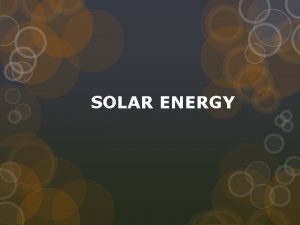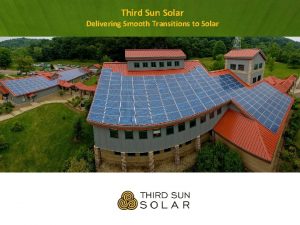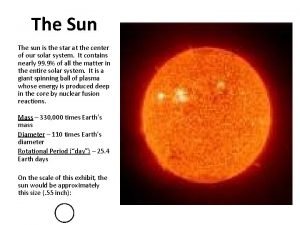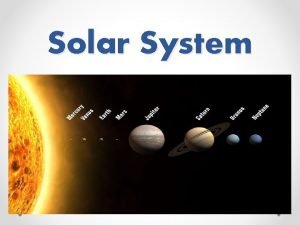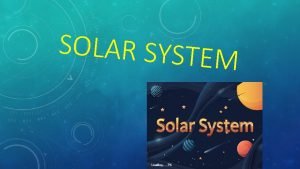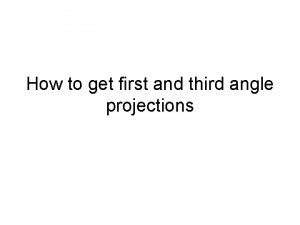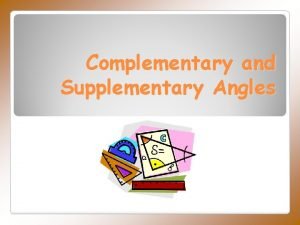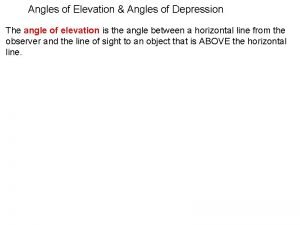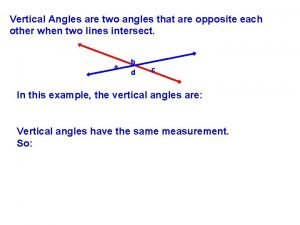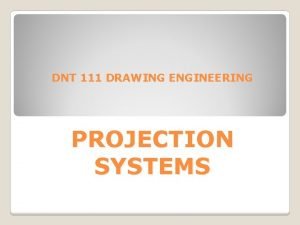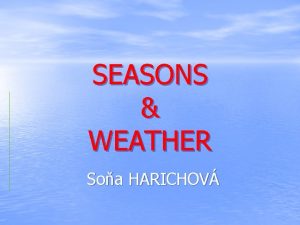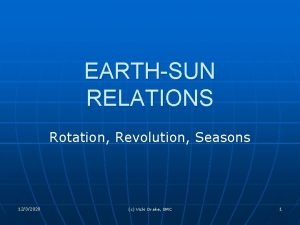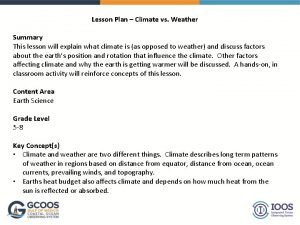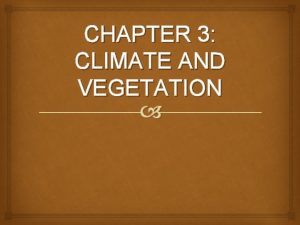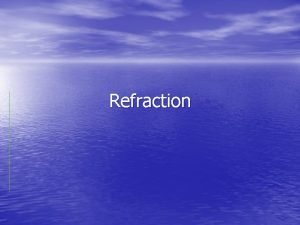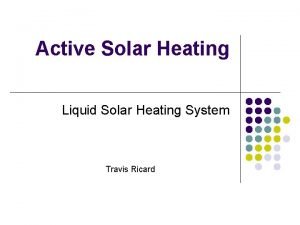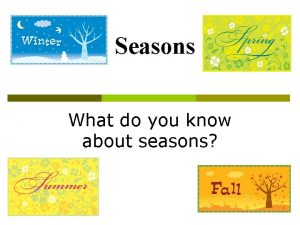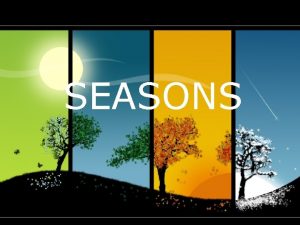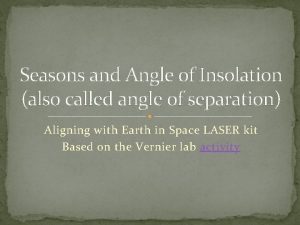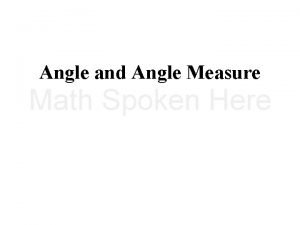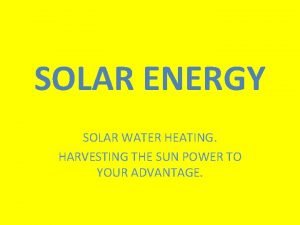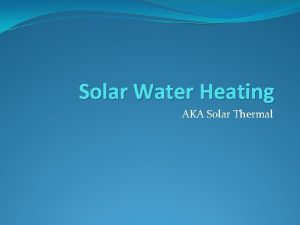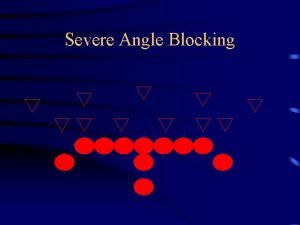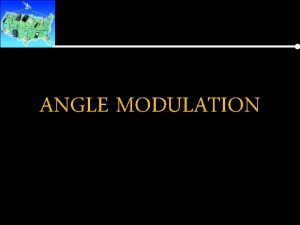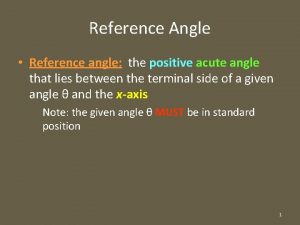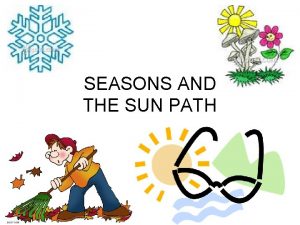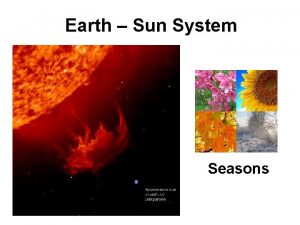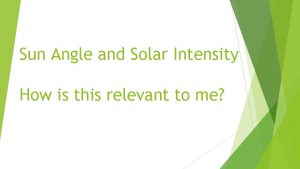SEASONS AND SUN Sun Angle and Solar Heating
























- Slides: 24

SEASONS AND SUN Sun Angle and Solar Heating Investigation 3, Part 3

REVIEW Earth rotates on its axis to produce day and night The tilt of Earth’s axis produces changes in day length over the course of a year

REVIEW Winter Solstice Occurs when the axis is angled away from the Sun Seasons are opposite in the Northern and Southern Hemisphere Summer Solstice Occurs when the axis is angled toward the Sun

QUESTIONS What kind of weather do you generally associate with summer? What is it about summer that makes it hotter? What happens to produce more heat?

ANSWER? Longer days More time for the Sun’s energy to be absorbed by the: Land Water Atmosphere But could there be more?

LIGHT MODEL Observe the spot of light where the beam hits the floor To represent a beam of light from the Sun Circle the bright spot on the graph paper

Form of energy Both are sources of light energy The circles shows the area that the energy beam covered at two different times

BEAM SPREADING Discuss the demonstration/lab in your group Work together to answer the questions on page 13 of your lab book.

OBSERVATIONS Size and shape of the light spot changes, depending on the angle Spot gets bigger as the angle between the beam of light and floor gets smaller üAmount of light energy in the beam stays the same üBoth spots deliver the same amount of energy to the paper

LIGHT ENERGY Energy travels from the Sun to Earth as radiation Radiant energy travels in rays

Angle SOLAR ANGLE Low solar angle rays hit the Earth’s surface at about 15˚ at which light strikes a surface Light rays from directly overhead have a high solar angle

ENERGY DENSITY Number of rays hitting a given area is the energy density Fewer rays hit an area = energy density is low Lots of rays hit an area = energy density is high Notice rays are equally spaced in both beams But, because of solar angle Three times as many rays when it is s from a high solar angle

BEAM SPREADING The way a light beam covers a larger area when it hits a surface at an angle

PENNY QUESTION Answer the fourth question 90˚ 30˚

PENNY QUESTION ANSWER Surface area of a penny does not change 90˚ Amount of energy hitting it varies with the solar angle 30˚ The greater the angle, the greater the energy it will receive

SOLAR ANGLE AND EARTH Earth is round = the angle at which light hits it is different from place to place Sunlight Earth viewed as many flat surfaces Light strikes surfaces that are at different angles

SOLAR ANGLE ON EARTH 30˚ Angle between the incoming rays of light and the surface of the land is the solar angle 45˚ Solar angle = 60˚ Solar angle = 90˚

SUNLIGHT ON EARTH’S SURFACE Light energy from the Sun is distributed over a larger area when it hits Earth’s surface at an angle Beam spreads more and more the farther north or south your go Does the same thing if you move east and west

AFTERNOON SUN Energy is most intense High solar angle Beam spreading is small

MORNING AND EVENING SUN Energy is least intense Low solar angle Beam spreading is large

THE RESULTS Solar energy most intense during the middle of the day in the tropics Energy is least intense in the morning, evening and extreme north and south regions

SOLAR ENERGY Almost all of the energy coming to Earth is solar energy Light absorbed by the land, water, and air is converted to heat Heat is the form of energy that makes things happen in the atmosphere

BEAM SPREADING Answer question 5 Solar angle influences how much energy is received in an area. A large solar angle means more energy per area on Earth’s surface. Smaller solar angles result in beam spreading, delivering less energy per area to Earth’s surface.

SOLAR ANGLE EXTENSION Use Science Buddies sheet in groups Write ? , background info, and hypothesis Attach temperature strips on major latitudinal lines on globe Turn lamp on Make factual observations Analyze results according to hypothesis Present data
 Dielectric heating
Dielectric heating Wholesale solar cell
Wholesale solar cell An inexhaustible source of energy
An inexhaustible source of energy What is radiant light
What is radiant light Assurant springfield ohio
Assurant springfield ohio The sun is the star at the center of the solar system
The sun is the star at the center of the solar system Dual sun solar system
Dual sun solar system Star sun solar
Star sun solar First angel projection
First angel projection Rotary instruments in dentistry
Rotary instruments in dentistry Angle klm and angle mln are a linear pair.
Angle klm and angle mln are a linear pair. Bisecting angles worksheet
Bisecting angles worksheet Segment bisector postulate
Segment bisector postulate Ways to remember complementary and supplementary angles
Ways to remember complementary and supplementary angles John wants to measure the height of a tree
John wants to measure the height of a tree Supplementary angles
Supplementary angles 1st angle and 3rd angle projection
1st angle and 3rd angle projection Seasons and weather
Seasons and weather How seasons work
How seasons work Cvicki
Cvicki Parts of the globe
Parts of the globe Continental location
Continental location What is the correct order of the seasons
What is the correct order of the seasons Angle similarity
Angle similarity At what angle of incidence is the angle of refraction 90
At what angle of incidence is the angle of refraction 90



